Another country, another perfect opportunity to explore the culture through one of my favourite mediums – food 🙂 I really struggled to find a cooking class, but I did come across the Foodie Tour by Red Cap Walking Tours – so immediately signed up.
Daniel met me in front of the San Francisco Church (the favoured meeting place of most tours) and off we headed to the nearby Mercado Lanza as our first stop. Yes, you guessed it, once again I was the only person doing the tour 🙁
We started off with one of the most common snacks in Bolivia – Api con Pastel. Api is a warm corn-based drink that is laced with sugar (of course) and spiced with cinnamon and clove. Has quite a mild flavour in fact. The reason it is 1/2 purple and 1/2 yellow is that is a mixture of Api made from the black corn and Api made from the regular yellow corn.
The pastel is a little like a cheese empanada from Chile – deep fried pasty with cheese inside and dusted with icing sugar. Why oh why does fried food have to taste so good!

The little food shops in the market are very small indeed (see picture above left) – and when we arrived there was actually a queue at this particular shop for their Api con Pastel – great sign!
The next stop was another popular drink in Bolivia – Jugo de Multivitamina. Yes, you read that correctly – Multivitamin juice. It includes all sorts of fruit, honey, cereal, water or milk and an egg if you wish – oh and sugar of course. So juice with a twist.
The story goes that it it was developed as a “complete meal” for the people who came down from El Alto (a city directly above La Paz city) to work in the markets. Because they would need to leave super-early in the morning, they wouldn’t have time to have breakfast – so this became their breakfast.
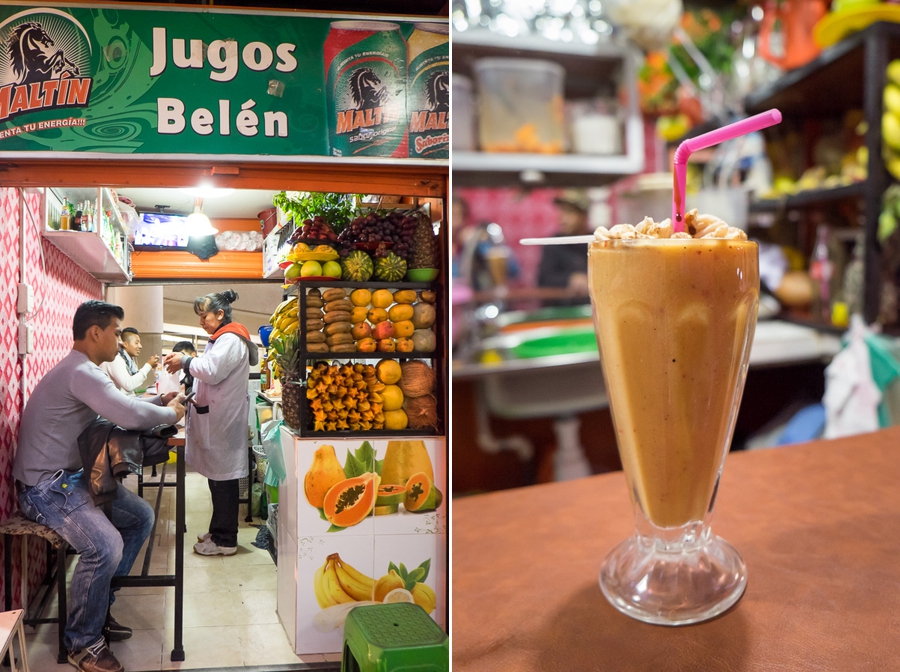
Mine was pretty banana-y but tasted good and had puffed wheat on top. It was at this point that I remembered to pace myself and realised that wouldn’t be able to finish each of the foods I tried. I only ended up drinking about 1/4 of this one.
From there we went for a stroll through the market that sets up each night in Calle Comercio on our way to Alaya – a very traditional restaurant near the centre of the city. There I had my first ever sip of beer and, as expected, I really, really didn’t like it. Huari is apparently the best beer in Bolivia – all the Bolivians I’ve talked to agree on this point 🙂
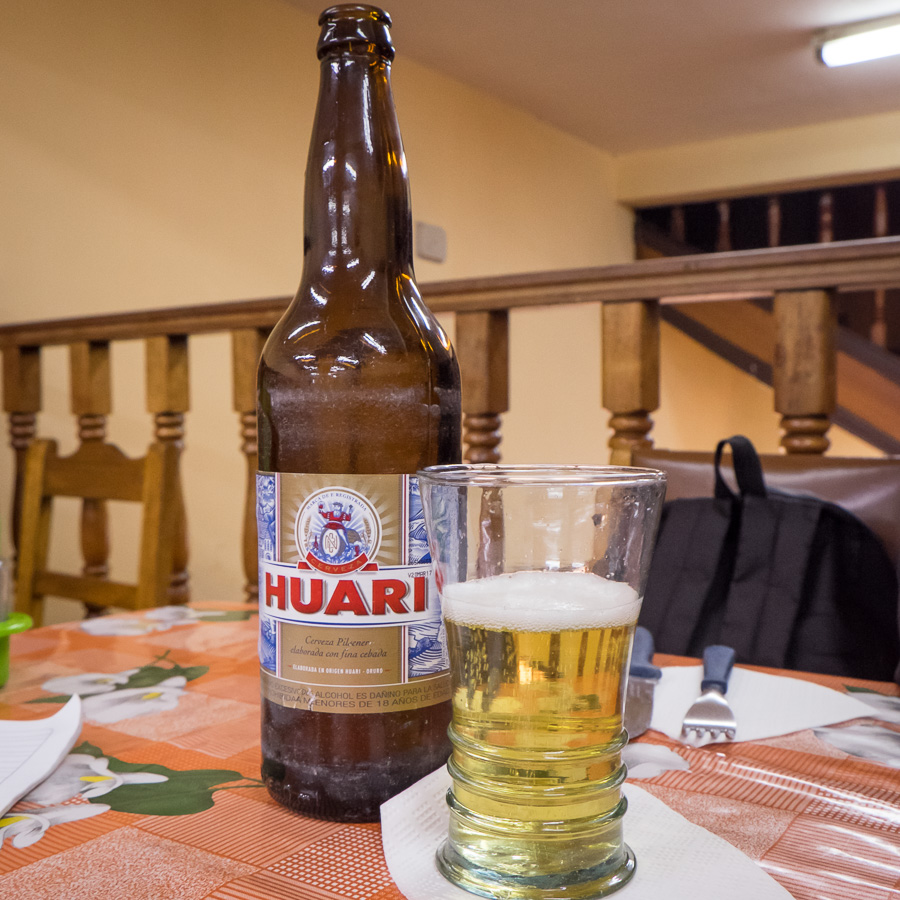
The first main course, which we had at Alaya, was Fritanga – apparently Daniel’s favourite Bolivian dish. It is very, very different to a Fritanga in Nicaragua! Nothing BBQed – but rather incredibly tender pork that melts in your mouth, with rehydrated dehydrated white potatoes (turns out these are really bland) and corn in a fantastic sauce.

It is served with Llajua – Bolivia’s spicy chili sauce – but for me the flavour of the Llajua and the flavour of the sauce for the fritanga didn’t go together. I reckon the Llajua would taste awesome with the Pastel above, but when I suggested this to Daniel he looked at me like I’d grown 2 heads.
After eating too much Fritanga (it was soooooo good!) we headed to our last stop – the Sol y Luna cafe, just around the corner. There we started off making a Singani Sour – very much like a Pisco Sour in Peru or Bolivia, but using Bolivia’s grape spirit, Singani, instead of Pisco.
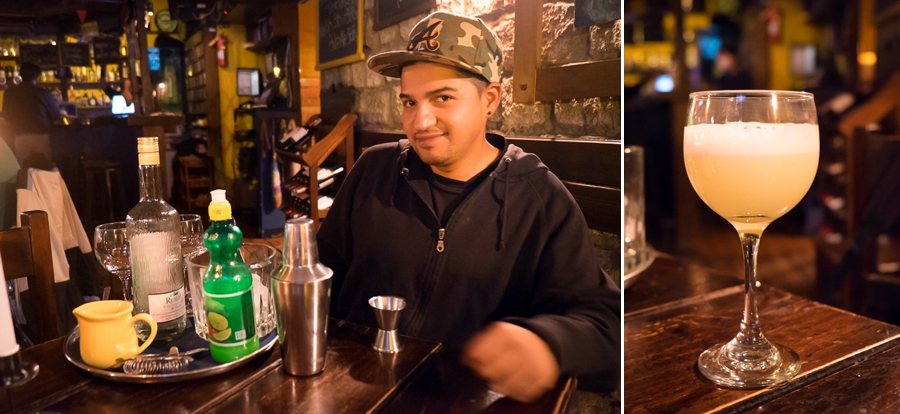
Then came our soup – Jan’qipa Soup – which is made with a corn base as well as onions, carrots and spices. It had a pretty mild flavour but was warm and hearty and Daniel was telling me that it reminds him of visiting his grandmother.
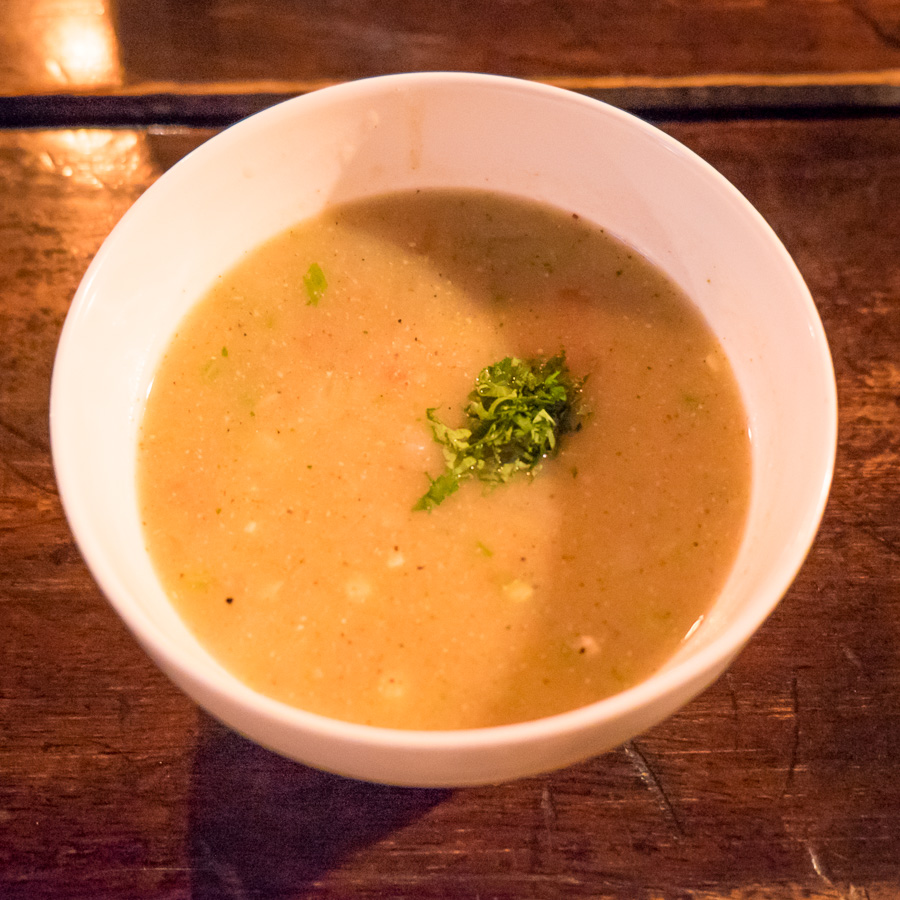
Then our second main meal of the night – Pique Macho – also known as the best drunken food in Bolivia. The story of its origin that Daniel told was that there were a couple of drunk guys who went into a small comedor (restaurant) about 3am and asked the casera (the lady who cooks) for a meal. The lady was about to close up shop and she didn’t really have anything much – so she threw together offcuts and all sorts of leftovers that she had. The guys asked her what it was called and she said Pique Macho. They loved it so much that they raved about it and, through word of mouth, heaps of people kept going to this lady and asking for Pique Macho.
Then one day the Mayor turns up and asked for Pique macho. The lady figures she can’t really feed the Mayor offcuts and leftovers so she threw some pork (salchicha – kinda like hotdogs), chicken and beef together with potato fries, capsicum, tomatoes, onion, hardboiled eggs and cheese – and this has become the Pique Macho Bolivians (particularly drunk ones) love today.
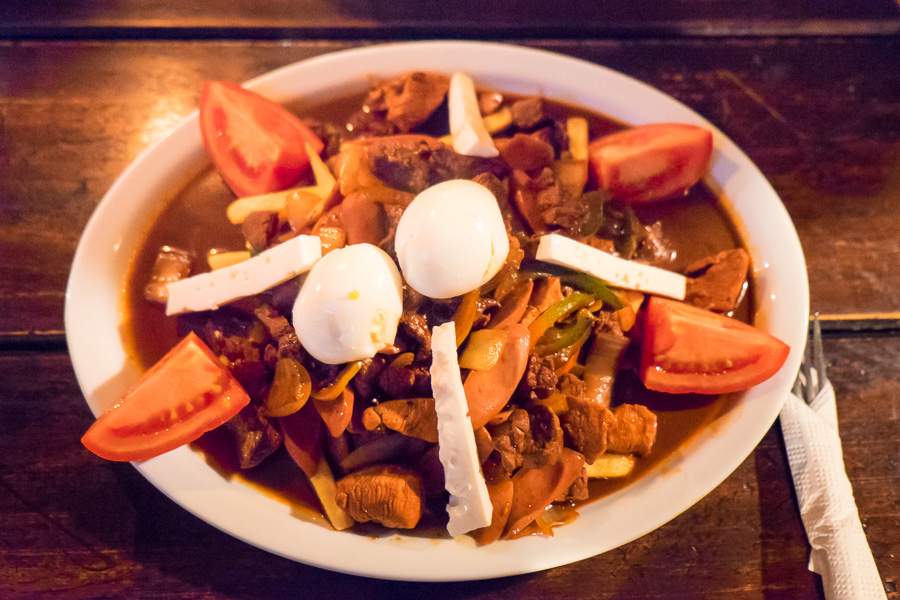
It was really, really good – and the added bonus for flavour is that the meat is all cooked in beer 🙂
By this time I was completely overstuffed (a feeling that continued right through the next day) but really enjoyed trying all the different dishes and Daniel was great fun.
Recommendation: Don’t eat lunch. Remember that you don’t have to finish everything (I forgot this initially). A fantastic way to get to try some of the most traditional dishes of Bolivia.
Cost: USD$30 which includes all food and drinks
Time: About 3 – 4 hours